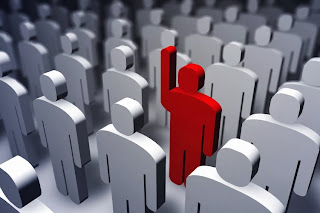What better way to celebrate the Olympics then to give cheer and remember past American Olympians of all races.
Within the next five posts we'll explore a chapter from the book Beads on a String-America's Racially Intertwined Biographical History
Best of luck America.
CONTRIBUTORS IN SPORTS
1800’s
DUKE PAOA KAHINU MOKOE HULIKOHOLA KAHANAMOKU born on August 24, 1890, "The Big Kahuna", is generally regarded as the inventor of the modern sport of surfing. He was also an Olympic champion in swimming. The name "Duke" is not a title, but a given name. His father was named "Duke" in honor of Prince Alfred, Duke of Edinburgh, who was visiting Hawaii at the time of the elder man's birth in 1869. The younger "Duke", as eldest son, inherited the name.
In his youth, Kahanamoku preferred an old-school (traditional) surf board, which he called his "papa nui", constructed after the fashion of ancient Hawaiian "olo" boards. Made from the wood of a koa tree, it was sixteen feet (4.8 m) long and weighed 114 pounds (52 kg). The board was without a skeg, which had yet to be invented. In his later career, he would often use smaller boards, but always preferred those made of wood. On August 11, 1911, in an amateur swim meet, Kahanamoku was timed at 55.4 seconds in the 100 yard (91 m) freestyle, beating the existing world record by 4.6 seconds, in the salt water of Honolulu Harbor. He also broke the record in the 220 yd (201 m) and equaled it in the 50 yd (46 m), but the Amateur Athletic Union, in disbelief, would not recognize these feats until many years late.
Nevertheless, Kahanamoku easily qualified for the U.S. Olympic swimming team in 1912, breaking the record for the 200 meter freestyle in his trial heat for the 4×200 relay. He went on to win a gold medal in the 100 meter freestyle in the 1912 Olympics in Stockholm, and silver with the relay team. During the 1920 Olympics in Antwerp, he won gold medals both in the 100 meters, bettering fellow Hawaiian Pua Kealoha, and in the relay. He finished the 100 meters with a silver medal during the 1924 Olympics in Paris, the gold going to Johnny Weissmuller and the bronze to Duke's brother, Samuel Kahanamoku.
Between Olympic competitions, and after retiring from the Olympics, Kahanamoku traveled to different places in the world, particularly Australia and the United States, to give swimming exhibitions. It was during this period that he popularized the sport of surfing, previously known only in Hawaii, by incorporating surfing exhibitions into these visits as well. His surfing exhibition at Sydney's Freshwater Beach on December 23, 1914 is widely regarded as the most significant day in the development of surfing in Australia. The board Kahanamoku used is retained by the Freshwater Surf Club and can be viewed if the caretaker is approached respectfully. There is a statue of Kahanamoku on the headland at Freshwater.
While living in Newport Beach, California on June 14, 1925, Kahanamoku rescued eight men from a fishing vessel that capsized in heavy surf while attempting to enter the city's harbor. Twenty-nine fishermen went into the water and seventeen perished. Using his surfboard, he was able to make quick trips back and forth to shore to increase the number of sailors rescued. Two other surfers saved four more fishermen. Newport's police chief at the time called Duke's efforts "the most superhuman surfboard rescue act the world has ever seen." Thus was born the tradition of lifeguards having rescue surfboards at the ready.
Duke Kahanamoku was the first person to be inducted into both the Swimming Hall of Fame and the Surfing Hall of Fame. The Duke Kahanamoku Invitational Surfing Championships are named in his honor. He served as sheriff of Honolulu, Hawaii from 1932 to 1961. There is also a chain of restaurants named after him in California and Hawaii called Duke's. Kahanamoku died January 22, 1968.
1900’s
DR. SAMMY LEE (born August 1, 1920 in Fresno, California) is the first Asian American to win an Olympic gold medal for the United States and the first man to win back-to-back gold medals in Olympic platform diving. Dr. Lee was a student-athlete at the University Of Southern California School Of Medicine, where he received his M.D. in 1947. He went on to serve in the U.S. Army Medical Corps in Korea from 1953–55, where he specialized in the diseases of the ear. I Lee also won a bronze medal in springboard diving in the 1948 games. He went on to coach Olympic divers including Pat McCormick and Greg Louganis.
VICKI MANALO DRAVES (born Dec. 31, 1924) is a Filipina-American athlete(diver) who in 1948 as a member of the U.S. team became the first woman in Olympic history to win gold medals in both platform diving and springboard diving; inducted into Int'l Swimming Hall of Fame in 1969.
TOMMY KONO (born June 27, 1930 in Sacramento, California) was a U.S. weightlifter in the 1950s. Kono set records in four different weightlifting classes: lightweight (148 pounds or 67 kilograms), middleweight (165 lb or 75 kg), light-heavyweight (181 lb or 82 kg), and middle-heavyweight (198 lb or 90 kg). He won a Gold Medal at both the 1952 and 1956 Olympic Games, and a Silver Medal at the 1960 Olympics. He was world champion from 1953 - 1959 and set 26 world records. He was also a successful Bodybuilder, winning the Mr. Universe title several times. Of Japanese descent, Sickly as a child, Kono's family was relocated during World War II to the California desert. The desert air helped Kono's asthma. It was during the relocation that Kono was introduced to weight training.




























0 comments:
Post a Comment